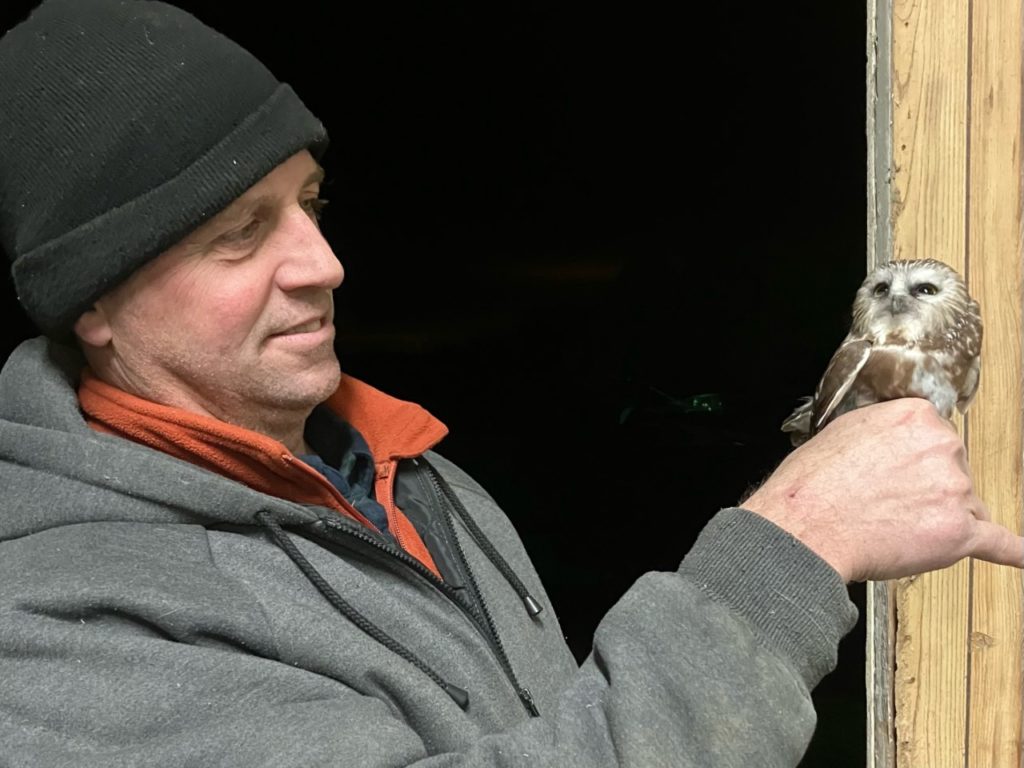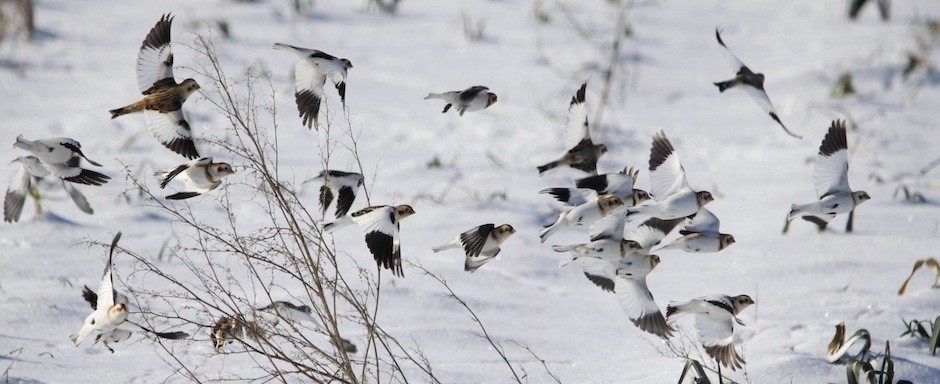
Duncan Gillyat holding the 100th Northern Saw-whet Owl banded at his farm over the last 2 years. -MMG
Sometimes I think we can get caught up in the numbers game. When we’re banding during migration periods it’s important to generate as much data as we can on the birds passing through. Some larger operations will do thousands of birds in a season and 100’s on some days. And that’s great. It gives a lot of information at that point in time and is very valuable. But in the long run I sometimes wonder: “so what?” The really important data, from my viewpoint, is in the recovery of individuals banded in other places at other times. Using these birds you can begin to build up a history for that bird and, by extrapolation, for the species. And if there are not smaller operations “downstream” from these larger operations or feeding into them then the number of band recoveries, already very small, becomes even smaller.
So I think it’s important to have smaller operations with competent, well-trained volunteers contributing to the overall system. A prime example of this is the increased number of Snow Bunting recoveries and observations we found just by mobilizing a crew of interested banders and birders across the country.
But you need places for small operations to do their thing. I think in this regard Haldimand Bird Observatory has been extremely lucky. The Lowville site exists due to Ben Oldfield’s community work and the contribution of the use of a prime ecological niche by Dirk Kneulman, the owner.
Elizabeth and Bill Hurkmans asked if we would be interested in using their farm/wetland just outside of Cayuga as a banding site. They’ve allowed us to make trails, alter vegetation (e.g., take out buckthorn), cut net lanes. Together with Cathy Blott of the Haldimand Stewardship Concil, they even arranged for a local man to put up a little banding hut for protection from the elements. And just this Summer they decided to forgo the income the 6-acre field adjacent to the banding area would generate through intensive farming. Instead they planted prairie grasses which will take a couple of years to mature but will provide habitat for “grassland birds” which are in great danger across the country.
The most recent “contributor” is Duncan Gillyat who has a farm on Irish Line. This is proving to be a great site for Snow Buntings in the Winter – there were flocks totaling between 1500 and 2000 birds there throughout January and February (of which Marnie banded a large number). But the big surprise has happened in the Fall. Over the past 2 Fall seasons it has yielded 100 Northern Saw-whet Owls (and maybe a few more as Marnie hasn’t given up yet). They are caught in just a small forest patch with wind generators that muffle the night sounds nearby on the adjoining property. Your first thought would be that it wouldn’t be a very good site. But in this fairly open countryside the little forest patch is an oasis where the little birds can rest and feed.
So, as I said, I think we’ve been really lucky to run into the type of folks we have who not only care about the environment but are willing to back it up concretely through the donation of the use of their land. To them: THANKS A TON!!
Rick

Yes….hats off to the backyard Ecologists!!